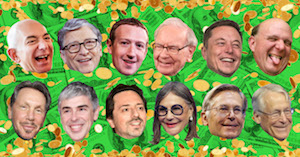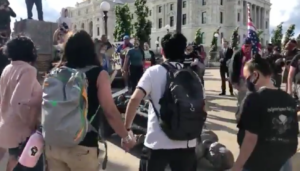 DAVID BACON, dbacon@igc.org, @pho
DAVID BACON, dbacon@igc.org, @pho
ANURADHA MITTAL, amittal@oaklandinstitu
Bacon is author of the new report “Dignity or Exploitation – What Future for Farmworker Families in the United States?” for the Oakland Institute. Mittal is founder and executive director of the group.
Bacon said today: “The H-2A program has created a captive labor force, made to work in brutal and often illegal conditions. In practice, it is not far from slavery. The majority of these migrant workers arrive in the U.S. already in debt. Department of Labor regulations permit companies to subject them to quotas that require them to work at an exhausting speed. Efforts to organize against exploitative conditions have been met with terminations, deportations and blacklisting.”
The report states that: “H-2A workers also face disproportionate exposure to the COVID-19 pandemic.” The report describes some of the most acute situations, and analyzes the basic reason for the high infection rate — congregate housing, or barracks, where workers sleep in bunk beds.
Growth of the H-2A program has also exacerbated an existing housing crisis for rural workers, as recruitment has skyrocketed from 10,000 visas in 1992 to over 250,000 in 2020. The exploitative conditions and vulnerability of migrants who came under the H-2A program are very close to those of the bracero program that was in place from 1942 to 1964. The Immigration and Naturalization Act of 1965, which put an end to the bracero program, established an immigration system based on family reunification and community stability, protecting the wages, rights, health, and housing of farmworkers. This system is under increasing threat today.
Mittal said: “Restoring the family preference system and halting the H-2A program are two of the most important decisions that will face the Biden administration in regards to the direction of U.S. immigration policy. The new administration needs to choose whose interests they are going to serve. Will it support the H-2A program and protect the profits of growers, or will it stand with the farmworkers who labor in the fields to feed this country?”







 Several statues of
Several statues of 